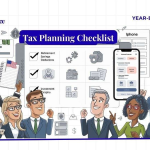Trump’s New Tax Plans: As part of the ongoing efforts to finance President Trump’s broadtax cuts,House Republicans are exploring the possibility of taxing certainemployee benefits, such as employer-provided transportation, free meals, and on-site exercise centre access. This proposal is still in its early stages, but it represents a new source of revenue that would help cover the substantial costs of Trump’s tax policies.
Many employee perks, transit passes, parking, meals, and gym access are excluded from taxable income. For example, up to $315 per month in employer-provided transportation benefits is tax-free. Furthermore, employer-provided suppers and on-site exercise centres are typically not taxed if provided for the employer’s convenience. If this modern charge proposition moves forward, these benefits might become assessable, costing specialists more while possibly sparing the government an assessed $157 billion over the next decade.
These assessment changes are still being discussed. The scale of the tax cuts—potentially coming to trillions of dollars—means officials are under pressure to discover ways to cover the income loss. This may lead to charges on benefits laborers have long enjoyed without considering the political and social results. A few specialists caution that these recommendations may confront noteworthy resistance from workers, making them troublesome to implement.
Why Burdening Worker Advantages Is Being Considered

President Trump’s tax cuts, including the $4 trillion expansion of the 2017 tax cuts, have made a gigantic budget crevice. Legislators are looking for ways to produce modern income to fill this crevice, and burdening periphery benefits is one choice. Agreeing with Republican gauges, saddling representative advantages like free dinners, transportation, and on-site exercise centers might create critical income over the next decade, which seems to offer assistance to balance the costs of the tax cuts.
However, propositions like these are not unused. Comparative thoughts have been examined, but have never picked up much footing. In truth, the concept of saddling periphery benefits has confronted critical resistance due to the coordinated effect it would have on employees’ paychecks. As one expert put it, “If you start taxing things that employees value, you’re going to see a lot of unhappy workers.”
What Does This Mean for Workers?

If the proposition moves forward, workers may discover themselves saddled with the value of benefits they already received tax-free. For example, if your boss gives free dinners, exercise centres, or stops, you may be saddled with the reasonable showcase value of these advantages. This implies that specialists confront higher assessable wages, eventually lessening the value of these benefits.
Jeff Martin, a tax principal at Grant Thornton, explains that employees would be taxed on the “reasonable advertising value” of the benefits they get, making these perks less attractive. If employees have to pay taxes on what were once free benefits, it could lead to dissatisfaction and frustration, especially when it comes to small but valued perks like free parking or access to a gym.
Impact on Employers

Trump’s New Tax Plans: If these assessment changes are sanctioned, bosses will also confront troublesome choices. A few may select to assimilate the extra costs of these charges, which might be costly and lead to budget cuts elsewhere. Other bosses might kill certain periphery benefits to dodge the additional regulatory expenses related to charge reporting.
While cutting benefits might assist companies’ spare cash, it seems contrary to affect worker assurance and efficiency. As Dustin Stamper, an assessment master at Allow Thornton, focuses, changing or dispensing with benefits that representatives have depended on for a long time can cause noteworthy dissatisfaction. “If employees have been getting free parking, and suddenly they’re asked to pay for it, it’s going to be a big issue,” he said. This could be especially painful in urban areas, where parking is already expensive.
The return-to-office (RTO) trend further complicates the situation. As more workers are asked to return to the office in person, removing perks like free parking or meals could make employees even more resistant. Some companies, such as Amazon and JPMorgan Chase, require employees to return to the office five days a week. And adding new financial burdens could make the transition harder.
Trump’s New Tax Plans: Consider Alternatives to Taxed Perks

In reaction to these potential changes, a few companies may turn toward other sorts of advantages that are less likely to be saddled. Instead of advertising unmistakable benefits like suppers or exercise centre participation, bosses offer money-related instruction, wellness programs, or other benefits that improve employees’ financial well-being. John Jurik, a national practice leader at Gallagher, suggests that companies must consider the value and impact of each benefit and the administrative cost of offering them.
Managers will also be required to consider competition. In a competitive work showcase, advertising appealing benefits is key to attracting the best talent. If one company drops employee perks due to new taxes, competitors may still offer them to stand out. Companies must carefully evaluate how their decisions will affect their capacity to draw in and retain representatives.
The Bigger Picture: Raising Revenue for Tax Cuts

The wrangle about oversaddling representative benefits highlights a broader issue: How to finance the noteworthy costs of Trump’s tax cuts. Agreeing with Chester Spatt, a back teacher at Carnegie Mellon College, officials must discover ways to raise significant income to balance the loss of assessment cuts. As it may, burdening worker advantages may not be the most compelling way to increase the required reserves. “The savings from taxing fringe benefits aren’t as big as some other potential options,” Spatt explains.
Still, the federal deficit is ballooning to over $36 trillion. Congress may be forced to consider unpopular measures to balance the budget. A tax policy expert, Norman Richter, points out, politicians may have to “get more aggressive than politically comfortable” to secure the necessary votes and pass tax legislation.
Taxing fringe benefits is unlikely to be a popular move. It could become necessary if lawmakers are committed to passing tax cuts. This thought has been discussed without much success. The gigantic toll of assessment cuts may prompt legislators to return to it, particularly as they battle to fill the income gap.
Conclusion on Trump’s New Tax Plans

The validity of burdening master benefits like free dinners, breaks, and workout centres poses a complex challenge for specialists as they look to back President Trump’s charge cuts. If sanctioned, this proposition may increase the charge burden on laborers, particularly those who have become acclimated to these advantages. Bosses may be required to adjust by moving to diverse benefits or absorbing the extra costs, but this may resolve issues.
Ultimately, these proposals face challenges. The pressure to raise revenue for tax cuts could push lawmakers to make difficult decisions. Only time will tell how this debate will unfold.
Thank you for reading this post, don't forget to subscribe!










